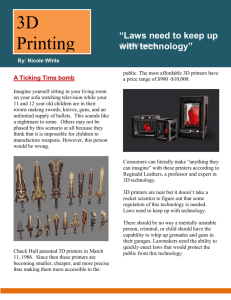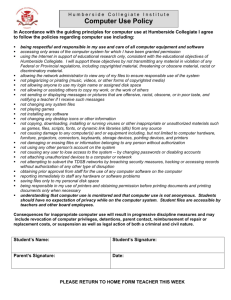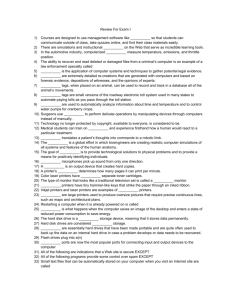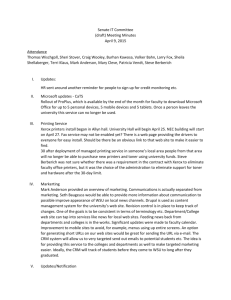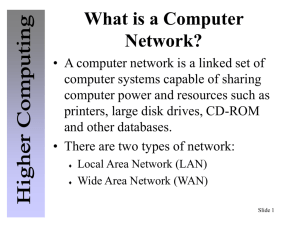File - computer hardware servicing
advertisement
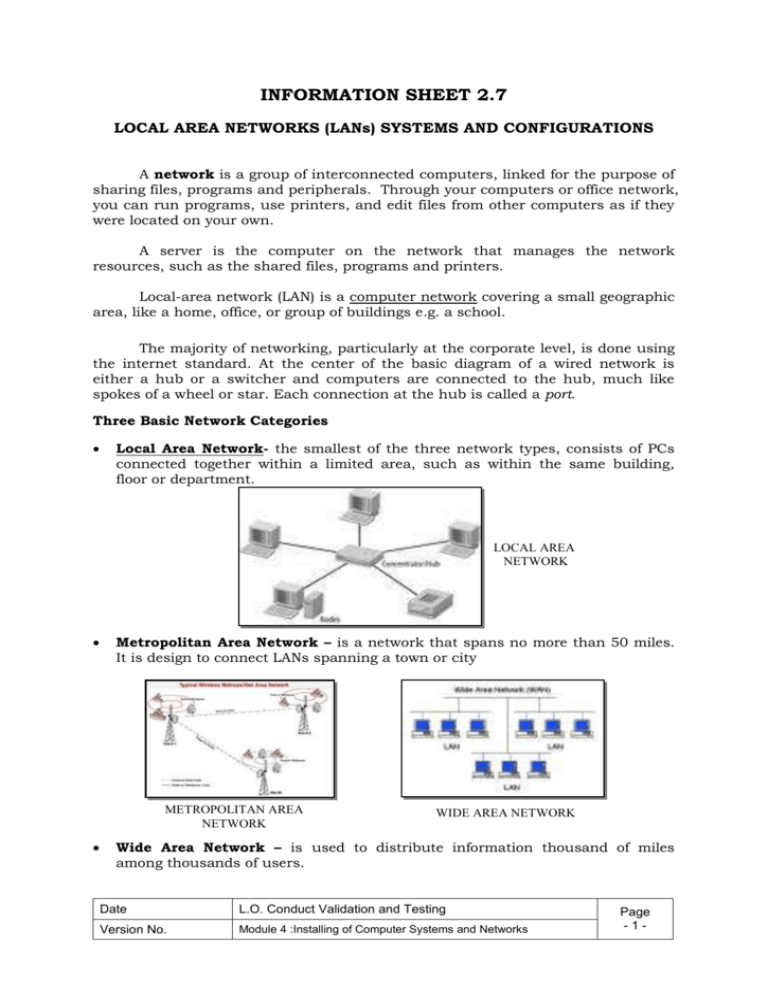
INFORMATION SHEET 2.7 LOCAL AREA NETWORKS (LANs) SYSTEMS AND CONFIGURATIONS A network is a group of interconnected computers, linked for the purpose of sharing files, programs and peripherals. Through your computers or office network, you can run programs, use printers, and edit files from other computers as if they were located on your own. A server is the computer on the network that manages the network resources, such as the shared files, programs and printers. Local-area network (LAN) is a computer network covering a small geographic area, like a home, office, or group of buildings e.g. a school. The majority of networking, particularly at the corporate level, is done using the internet standard. At the center of the basic diagram of a wired network is either a hub or a switcher and computers are connected to the hub, much like spokes of a wheel or star. Each connection at the hub is called a port. Three Basic Network Categories Local Area Network- the smallest of the three network types, consists of PCs connected together within a limited area, such as within the same building, floor or department. LOCAL AREA NETWORK Metropolitan Area Network – is a network that spans no more than 50 miles. It is design to connect LANs spanning a town or city METROPOLITAN AREA NETWORK WIDE AREA NETWORK Wide Area Network – is used to distribute information thousand of miles among thousands of users. Date L.O. Conduct Validation and Testing Version No. Module 4 :Installing of Computer Systems and Networks Page -1- Network Terms: Network Server- is a powerful computer whose sole purpose is to serve network clients. NETWORK SERVER Host – any computer whether mainframe, server, or even PC that acts as an information source on a network. Peers- mean any computer sharing the same protocol layer with another computer. Workstation- is any network computer that connects to and request resources from a network Protocol – refers to the specific standards governing the sending and receiving of data. Types of Networks server/client –use a network operating system to manage the entire work. Date L.O. Conduct Validation and Testing Version No. Module 4 :Installing of Computer Systems and Networks Page -2- peer-to-peer - no centralized computer oversees the networks, no server, and computers simply connect with each other in a network group to share files, printers, and internet access. The Basic Rule The basic rule for network design is known as the 5-4-3 rule. It states that in a 10 Mbps. Ethernet network: you can have a maximum of five cable segments between any two computers you can have a maximum of four repeaters (hubs, switches, wireless access points, etc.) between any two computers of the five cable segments (maximum) between any computers, only three of these can terminate in computers. Date L.O. Conduct Validation and Testing Version No. Module 4 :Installing of Computer Systems and Networks Page -3-


